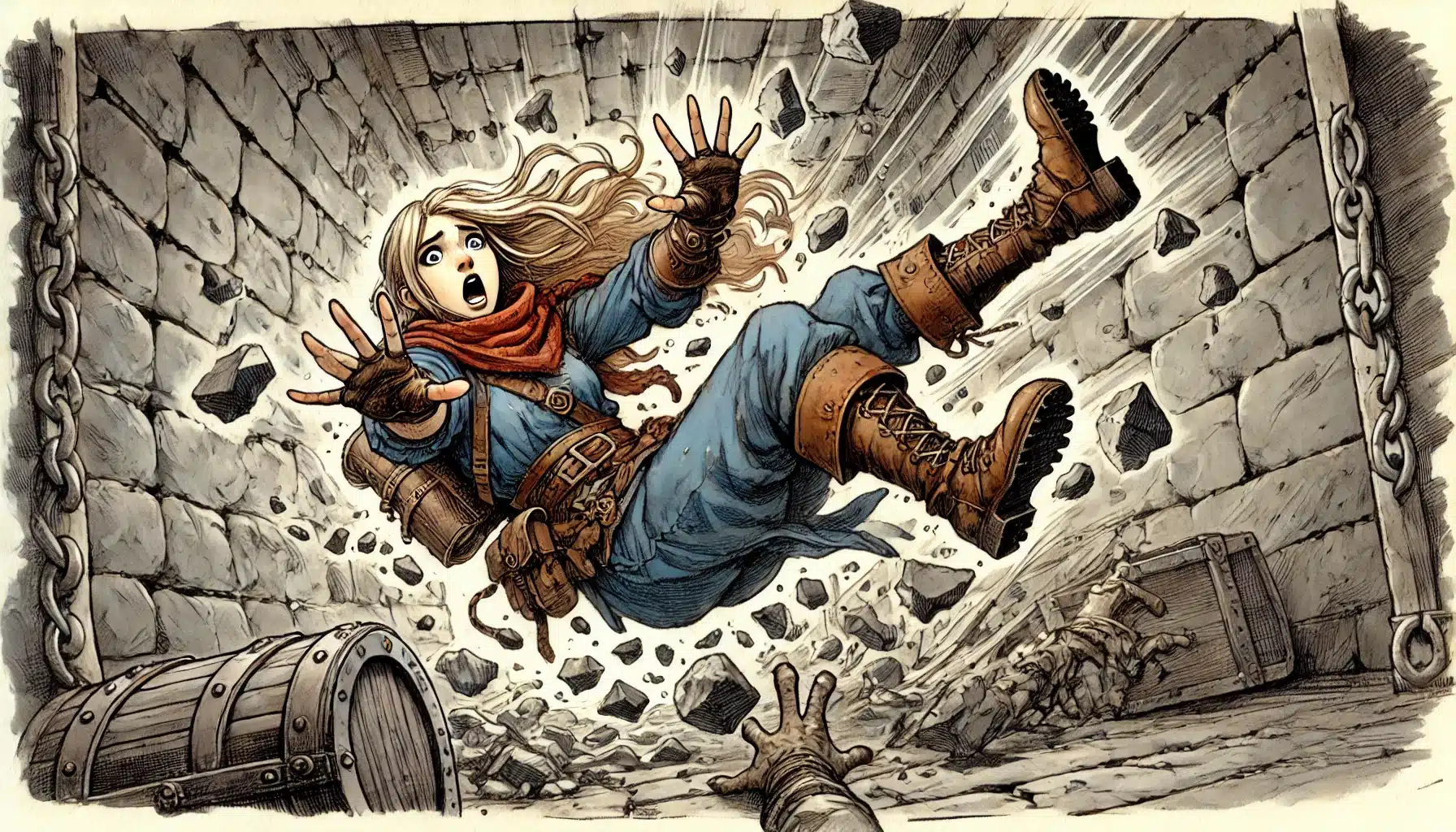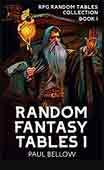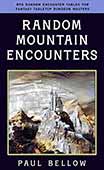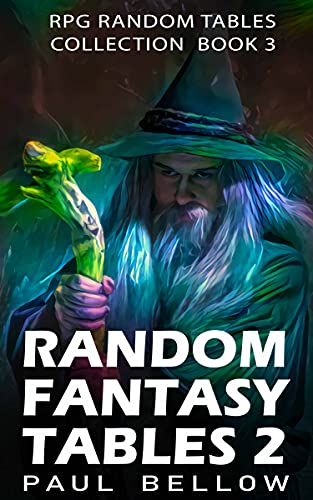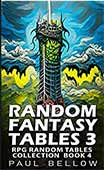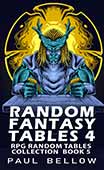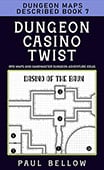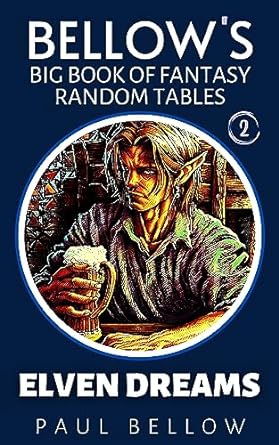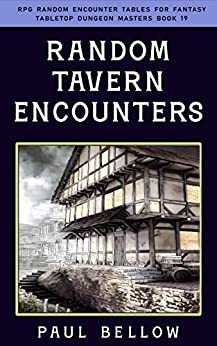When entering a D&D session, think of conditions as delightful surprises waiting to spice up your gaming experience. Imagine an encounter where everyone is engaged, but suddenly, someone gets hit with a spell that Paralyzes them mid-action. It’s in moments like these where the comedy gold starts to shine! Your party’s brave warrior, who usually charges headfirst into danger, is now stuck, wide-eyed and frozen in a goofy pose. The group must quickly come up with creative solutions to rescue their frozen companion while navigating the chaos of the encounter. This creates a shift in focus, where the tension transforms into laughter—players can play up the silly dynamics, turning a moment of peril into a running joke that lasts across sessions.
On the flip side, you might find a character hit with the Frightened condition, leading to a wild goose chase as they try to escape an imaginary monster. Picture them sprinting in the wrong direction or attempting to act brave while still shaking in their boots. These moments not just deepen the game, but they foster camaraderie, as everyone at the table shares in the hilarity.
And let’s not forget the unique little scenarios that can arise from characters who find themselves Charmed. Picture a seasoned warrior suddenly proclaiming their unwavering loyalty to the party’s enemy, leaving their teammates scrambling to explain that no, really, that dragon isn’t their new best friend. The potential for role-playing and laugh-out-loud interactions is boundless!
Exploring these conditions illuminates the whimsical side of D&D, offering opportunities for both laughter and learning. Each condition is a tool in the Dungeon Master’s kit, capable of transforming the narrative and offering players chances to be both heroic and hilariously unlucky. Picture your noble paladin trying to bravely charge an enemy while Frightened, only to end up back at the tavern, ordering a calming pint instead. These conditions, when wielded with creativity and humor, ensure that every session is packed with unexpected developments and uncontrollable laughter.
The comedic potential inherent in D&D conditions truly does unlock a new layer of game-play. So, with a playful twinkle in our dice-rolling eyes, let us dive headfirst into the myriad of conditions D&D offers. From Paralyzed to Petrified, from Frightened to Charmed, each condition awaits to be unlocked, examined, and employed with comedic flair, ensuring every adventurer leaves the table with a smile—even if their character’s predicament is less than smile-inducing.
Grasping the Basics of D&D Conditions
In the landscape of Dungeons & Dragons, conditions are temporary states that affect characters or creatures in various ways. They are designed to influence not just the mechanical aspects of play—like movement, attacks, and abilities—but also to spark creativity in how players and Dungeon Masters (DMs) navigate the game. Conditions can be imposed by spells, abilities, magical items, or environmental factors, and each brings its own challenges and opportunities to the table.
These conditions, ranging from Blinded and Deafened to the more exotic like Paralyzed and Petrified, play a vital role in balancing power dynamics during gameplay. For both players and DMs, understanding these conditions allows for strategic planning and problem-solving, transforming battles and interactions into gripping scenes of drama and comedy. When a mighty warrior finds themselves suddenly vulnerable due to a condition, the balance of power shifts, presenting both a tactical challenge and a storytelling opportunity.
Moreover, conditions encourage creative problem-solving, pushing players to think outside the box. Whether it’s finding a way to overcome the debilitating effects of Exhaustion during a marathon dungeon crawl or devising a plan to navigate social interactions while magically Charmed, these conditions add layers of complexity and humor. They serve as a reminder that every challenge in D&D is more than a hurdle—it’s an opportunity to engage with the narrative, to explore character traits, and to laugh at the absurdities that unfold when adventurers face the unknown.
Try my AI Tabletop RPG generators...and an extensive library of content!
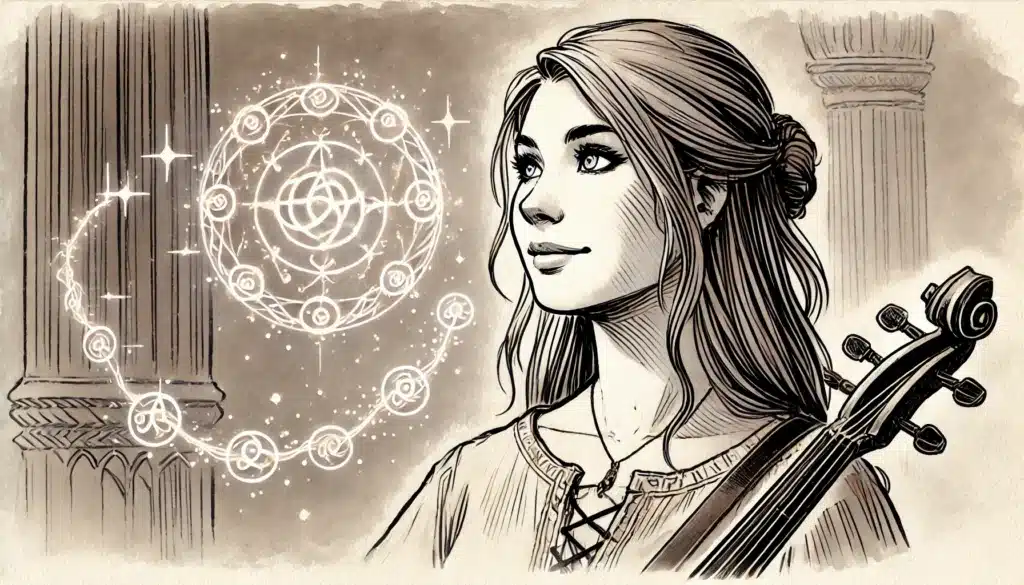
The Condition Smorgasbord: An Overview
Among the most common conditions that regularly spice up D&D sessions are Paralyzed, Frightened, and Charmed. Each brings its own flavor to the table, transforming an ordinary battle into a memorable showdown. Paralyzed stops characters in their tracks, rendering them unable to take actions but offering others a moment of strategic reflection—or frantic desperation. Meanwhile, the Frightened condition can quickly scatter even the most disciplined party, turning a strategic retreat into a slapstick marathon of misdirection and heroic bravado.
The Charmed condition spins a web of intrigue and confusion, as characters may find themselves enamored with an enemy or duped by a silver-tongued charlatan. These conditions can turn allies into frenemies and otherwise routine encounters into social debacles. Together, they illustrate the multifaceted nature of D&D, where power dynamics shift with the roll of a die, and humor often follows in the wake of misfortune.
As DMs unleash these conditions upon their players, they tap into a wellspring of potential scenarios. Whether it’s using Paralyzed to heighten tension or leveraging Frightened to induce chaos, the goal is to concoct scenarios that allow these conditions to shine. With a little creativity, each encounter can become a stage for comedic brilliance, transforming ordinary encounters into sessions that players recount with glee.
Condition Spotlight: Paralyzed!
The Paralyzed condition, a staple in the D&D condition lineup, can be both an adventurer’s nightmare and a DM’s delight. When a character becomes Paralyzed, they’re effectively frozen in place, unable to move, speak, or take actions. This leaves them vulnerable to attacks and reliant on the whims of their companions to save them from their plight. For players, this can be a source of tension as they find themselves helpless in the face of danger—or comedy, if they choose to embrace the absurdity of their situation.
⚔️ Fantasy RPG Random Tables Books
Make life as a Gamemaster easier…
If you play Dungeons & Dragons, Pathfinder, or other fantasy RPGs, this
RPG random tables series
is packed with encounters, NPCs, treasure, and more. Available in eBook or print—either way, you’ll have a wealth of adventure ideas at your fingertips.
For Dungeon Masters, the Paralyzed condition is a tool for building dramatic tension and eliciting laughs. By timing its use well, DMs can create situations where players must devise clever plans to rescue their incapacitated comrades. Consider a scenario where the party bard, amid a performance, is suddenly Paralyzed by a jealous rival’s spell, leaving the rest of the party to cover for them in increasingly ridiculous ways. Alternatively, envision a brave warrior, struck motionless mid-battle, swaying precariously on the edge of a perilous cliff as their companions scramble to pull them back to safety.
Players, too, can find creative ways to overcome the Paralyzed condition. They might prepare spells or items in advance to counter paralysis, or develop ingenious tactics to avoid being caught in such a state. When players work together to navigate these challenges, the result can be both exhilarating and uproariously funny.
- Scenario Ideas for Paralyzed:
- A Paralyzed wizard is held aloft by their party as they navigate a riddle-laden temple, acting as a literal “mystical staff.”
- A Paralyzed rogue is used as a battering ram to break down doors during a hasty retreat.
- An artistic bard becomes Paralyzed while performing, leaving the crowd to wonder if it’s part of the act.
- A knight is Paralyzed during a joust, leading to an “exhibition match” of rolling them off the horse to conclude the event.
- A Paralyzed ranger is strapped to a bear to maintain morale, becoming an unintended cavalry of sorts.
- A Paralyzed cleric is dressed up as a mannequin to fool an army of animated armors.
- A Paralyzed monk is mistaken for a statue in a gallery, sparking an impromptu art critique.
- A Paralyzed fighter is turned into an “unwilling chariot” by goblins in a makeshift race.
- A Paralyzed druid is propped up in a field as a “scarecrow” to ward off a swarm of pesky sprites.
- A Paralyzed barbarian is used as a makeshift bridge over a pit, much to their chagrin (and everyone’s amusement).
Such scenarios not only bring the party together in moments of crisis but also inspire laughter as players find themselves in ludicrous situations, navigating risks and rewards with a flair for the comedic.
In the end, dealing with paralysis-inducing foes requires not just strength but ingenuity. Adventurers must learn to adapt, leveraging their unique skills to turn even the direst of situations into something memorable. As they confront these challenges together, they forge bonds and create stories of camaraderie and resilience, where even a momentary setback becomes a highlight of their heroic journey.
From Petrified to Stone-Cold Comedy
The Petrified condition in D&D brings a literal transformation, turning characters into stone statues. This condition can lead to moments of panic but also plenty of humor as adventurers grapple with the sudden change. Staring down a basilisk or a medusa and finding oneself transformed into a decorative piece is both a terrifying and laugh-inducing experience, especially when the party must find a way to restore their stone-cold companion.
Petrification’s comedic potential lies in its absurdity. Imagine the party’s most boisterous member reduced to silent stone, carried around by the rest of the group as an “artistic addition.” Placing the Petrified character in unlikely scenarios—such as using them as a scare tactic to frighten off superstitious foes or as a bargaining chip with a collector of fine statues—adds layers of humor and creativity to the session.
Reversing petrification often involves creative problem-solving, leading to memorable quests and interactions. Whether it involves seeking out a rare potion, bargaining with a powerful entity, or embarking on a journey to find a master stonemason, the road to restoration is ripe with narrative potential. The journey is half the fun, as players navigate these obstacles, often with their stone friends in tow.
| Creature Causing Petrification | Comedic Potential | Ways to Reverse |
|---|---|---|
| Basilisk | Stone lawn gnome placement | Use of Greater Restoration |
| Medusa | Fashion statement overload | Reflective surfaces |
| Cockatrice | “Chicken now or statue later” dilemma | Antidote derived from cockatrice feathers |
| Gorgon | Cow-licked into stone | Alchemical solutions |
| Earth Elemental | Unexpected pet rock | Magical spell reversal |
| Beholder | “Eye see stone!” puns | Heroic fate-breaking quest |
| Catoblepas | Stone bovine roundup | Divine intervention |
| Dracolisk | Dragon-themed garden decor | Potion of Purification |
| Gargoyle | “Living the statue life” club | Dispel Magic |
| Stone Giant | Walking tourist attraction | Ritual of Revival |
Encouraging DMs to lean into the absurdity of stone statues as plot points can lead to some of the most entertaining moments in a campaign. Whether players are devising inventive ways to transport their stone-cast friend or negotiating for the antidote, the laughter and creativity will flow freely. It’s all about embracing the humor amidst the challenges, turning every encounter with petrification into a tale worth remembering.
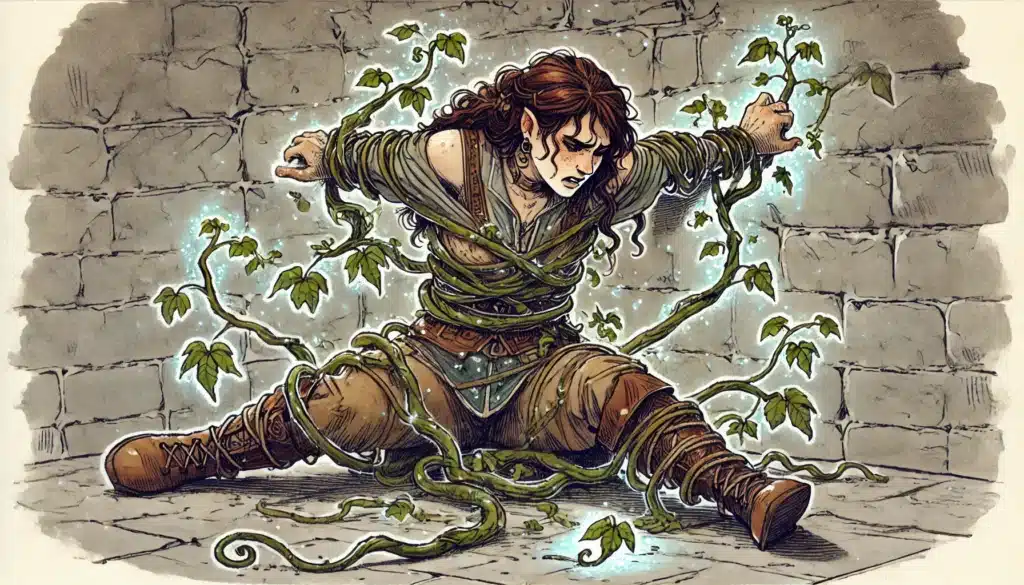
Feared Yet Funny: The Frightened Condition
The Frightened condition in D&D injects a blend of tension and comedy into any encounter. When characters succumb to fear, they may flee in the wrong direction or attempt to act bravely despite their trembling knees. This condition adds a dynamic layer to gameplay, allowing for both dramatic confrontations and comedic missteps as adventurers try to save face while quaking in their boots.
The humor in fear often comes from the characters’ reactions. A notorious rogue, known for their steely resolve, might find themselves retreating into a closet to escape a particularly menacing imp. Alternatively, a warrior facing their fear could end up charging past the enemy, inadvertently causing chaos among the ranks. These moments of unintended hilarity enrich the storytelling experience, offering comedic relief amid the adventure’s challenges.
| Fear Inducer | Comedic Effects | Recovery Strategies |
|---|---|---|
| Dragon Roar | Scatter like chickens | Rally with a battle shout |
| Ghostly Moan | Hide under the table | Use of Brave Song |
| Owlbear Charge | Climb an unseen cliff | Encourage with “the buddy system” |
| Spooky Shadow | Accidentally slap allies | Amuse with heroic boasts |
| Cackling Hag | Retreat into a barrel | Inspire with Courage Spell |
| Howling Wind | Windswept hair resets | Find the source and calm it |
| Golem Stomp | Leave cartoon impressions on walls | Steady with breathing exercise |
| Dread Wraith | Dance-like evasions | Remember fallen allies’ courage |
| Mimic Surprise | Glue-soled shoes effect | Cleverly distract and regroup |
| Illithid Intimidation | Unintended gibbering | Seek arcane reassurance |
| Dire Wolf Growl | “Tree-hugging” escape | Implore pack tactics |
| Lich’s Glare | Sudden statue impressions | Channel inner paladin’s oath |
Embracing the dramatic possibilities of fear can enhance a game session, as players navigate not only physical threats but also the limits of their characters’ courage. The interplay of bravery and blunder allows everyone to enjoy those moments of shared laughter and camaraderie, underscoring the idea that every fear faced is an opportunity for an epic tale.
⚔️ Fantasy RPG Random Tables Books
Make life as a Gamemaster easier…
If you play Dungeons & Dragons, Pathfinder, or other fantasy RPGs, this
RPG random tables series
is packed with encounters, NPCs, treasure, and more. Available in eBook or print—either way, you’ll have a wealth of adventure ideas at your fingertips.
Charmed, I’m Sure: Navigating the Charmed Condition
The Charmed condition adds a delightful twist to any campaign, turning social interactions into a comedy of errors. When a character becomes Charmed, they may suddenly view an enemy as a dear friend or ally, leading to unexpected alliances and humorous misunderstandings. This condition is rife with potential for comedic scenarios as players navigate the tricky waters of enchanted affections.
In a social setting, Charms can lead to some memorable moments. A charming bard might inadvertently persuade the group to take on an unnecessary quest, convinced by a not-so-innocent smile. Or, a Charmed fighter might find themselves protecting the very villain they set out to defeat, bewildering both allies and enemies alike. The social chaos that ensues provides ample opportunities for role-playing and laughter.
- Humorous Interactions from Charmed:
- A Charmed rogue excitedly spills the party’s plans to their “new best friend.”
- A warrior, under a Charm, becomes a knightly protector of a villainous wizard.
- The party cleric finds themselves offering unsolicited counseling to a bandit.
- A Charmed wizard shares spell secrets with an “admiring” enemy apprentice.
- A bard, smitten, serenades a villain in the middle of a battle.
- The ranger insists on sharing rations with a hungry troll.
- A druid invites a wild animal into camp, assuring everyone it’s “just misunderstood.”
- A Charmed monk accidentally enrolls in a rival monastery’s teachings.
- The barbarian becomes a reluctant dance partner for a demon at a festival.
- An artificer gifts a prized invention to an “admiring” rival inventor.
- The paladin offers confession to a devil, utterly convinced of its reformed nature.
- A Charmed sorcerer casts protective wards over a villain’s stronghold, “just in case.”
Creating these scenarios can lead to unpredictable yet delightful sessions where players and DMs alike can revel in the social chaos. As alliances shift and misunderstandings multiply, everyone at the table is bound to find themselves amused by the sheer audacity of these enchanted interactions.
Encouraging players and DMs to embrace the social havoc generated by Charmed conditions leads to a richer storytelling experience. By exploring the humorous side of enchantment, adventurers can deepen their role-playing skills while enjoying a good laugh. These moments of confusion and hilarity make campaigns memorable, cementing the Charmed condition as both a challenge and a source of comedy gold.
Exhaustion: When Your Adventurers Need a Nap
Exhaustion in D&D introduces a realistic element of fatigue that can add both tension and humor to any campaign. As adventurers push their limits, they accumulate levels of Exhaustion, which can lead to both slapstick moments and serious consequences. From stumbling over narratives and tumbling into traps, to collapsing in the middle of a quest, exhaustion serves as a reminder that even the mightiest heroes need a break now and then.
Each level of Exhaustion adds layers of difficulty, turning heroic endeavors into exercises in comedic futility. A wizard on the brink of collapse might accidentally set their own robes aflame with a misfired spell, or a rogue might find themselves too tired to dodge an obstacle, ending up in a heap with an indignant sigh. Navigating the chaos of exhaustion leads to memorable moments where every action carries the weight of hilarity.
Players and DMs can creatively incorporate exhaustion into their adventures, using it as a storytelling device. Whether it’s finding a way to safely rest in hostile territory or turning a simple task into a Herculean effort due to fatigue, these scenarios provide opportunities for laughter and camaraderie. Players must weigh the risks and rewards of pushing their characters to the limit, often leading to unexpected outcomes.
- Creative Uses for Exhaustion:
- A sleep-deprived bard accidentally performs high-volume lullabies, putting allies to sleep mid-battle.
- A rogue, too tired to sneak, inadvertently starts a slapstick chase through a crowded marketplace.
- A weary paladin challenges a tree to a duel, convinced it’s a powerful druid opponent.
- An exhausted wizard’s spells misfire comically, creating unexpected—and entertaining—results.
- The ranger’s fatigued animal companion leads the party in circles, sparking a woodland merry-go-round.
- A fatigued barbarian mistakes a boulder for a foe, engaging in a one-sided battle of endurance.
- The druid’s tired wild-shape acts unpredictably, adding extra flair to an already chaotic situation.
- An overtired cleric blesses inanimate objects, creating “holy relic” confusion.
- An exhausted fighter’s swordplay takes on a dance-like quality, amusing enemies and allies alike.
- The monk’s meditation turns into spontaneous napping, leaving them unexpectedly defenseless.
Using exhaustion as both a balancing factor and comic relief, DMs can craft engaging scenarios that highlight the human (or inhuman) side of adventuring life. These moments of levity help to break up intense gameplay, allowing players to enjoy the lighter side of their characters’ struggles.
Try my AI Tabletop RPG generators...and an extensive library of content!
DND Conditions Beyond: Custom Creations for Maximum Humor
Creating custom conditions tailored to your campaign can add fresh challenges and a dose of laughter to your D&D sessions. As DMs explore their creativity, they can design unique conditions that surprise and entertain their players, balancing originality with playability. Whether it’s a “Lovesick” condition causing characters to serenade their foes or a “Vertigo” condition leading to dizzying combat antics, custom conditions offer a wealth of storytelling opportunities.
By crafting these personalized conditions, DMs can set the stage for memorable adventures filled with unexpected twists and turns. These bespoke conditions can lead to unparalleled fun, inviting players to embrace the quirks and challenges of their characters’ unplanned predicaments. The humor and originality of custom conditions enhance both the gameplay and the storytelling experience.
| Custom Condition | General Effects | Comedic Potential |
|---|---|---|
| Lovesick | Infatuated with nearest foe | Awkward serenades and attempts at romance |
| Vertigo | Dizzy and unsteady | Unplanned pirouettes during combat |
| Jelly Limbs | Wobbly appendages | Attempts to wield oversized weapons comedically |
| Goblin’s Curse | Speaks only in riddles | Confusion among allies and enemies |
| Featherweight | Floats gently mid-air | Uncontrollable drifting and levitation |
| Sticky Fingers | Cannot release held objects | Comedic juggling of items and foes alike |
| The Giggles | Uncontrollable laughter | Disrupted stealth and spellcasting attempts |
| Drowsy | Tendency to doze off unexpectedly | Unplanned naps in precarious positions |
| Echo Voice | Speaks in booming echoes | Dramatic and unintended monologues |
| Swap-See | Visual perspectives switch places | Experiencing viewpoints of other characters |
As DMs experiment with these inventive conditions, they open the door to new experiences and storytelling possibilities. Players are encouraged to embrace the humor and challenge each custom condition presents, turning even the most absurd scenarios into opportunities for growth and entertainment.
Empowering DMs to create and deploy their own conditions enhances the dynamic world-building potential of D&D. By fostering an environment where both storytelling and humor thrive, these custom conditions help transform each session into a vibrant exploration of creativity and camaraderie. As players adapt to these unique challenges, they discover the joy of working together to overcome obstacles and create shared stories that linger long after the dice have stopped rolling.
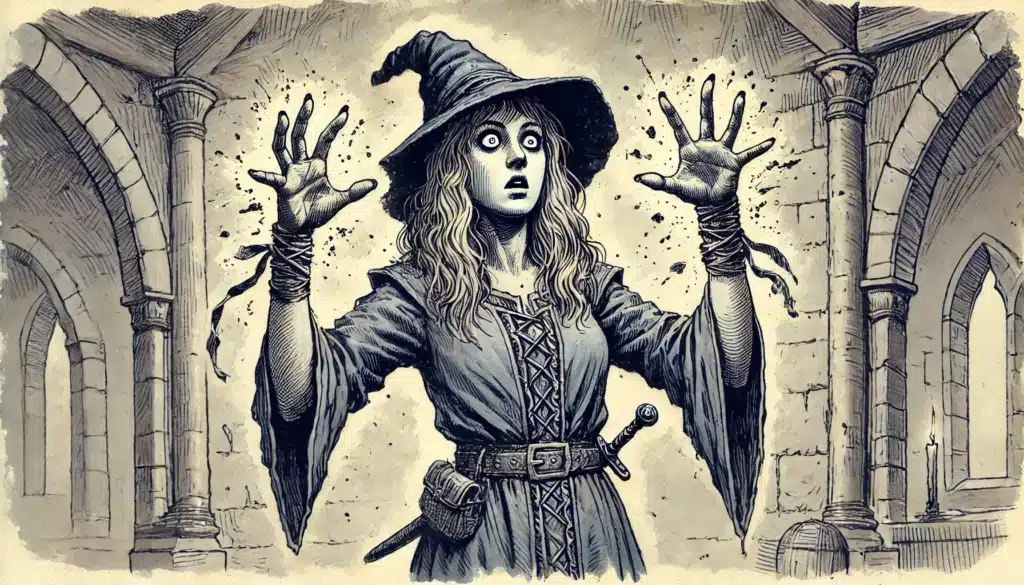
Player Strategies: Turning Conditions into Comedy
Players can turn conditions into comedic gold by embracing the absurdities that arise when their characters are cursed, hindered, or magically altered. Whether it’s an unexpected bout of Exhaustion turning a daring escape into a slapstick escapade or a Charmed moment leading to a humorous misunderstanding, players have numerous opportunities to exploit the comedic potential of conditions. With a little creativity and collaboration, even the most challenging situation can become a source of laughter and shared enjoyment.
One strategy for maximizing humor is role-playing exaggerated reactions to conditions. A character facing the Frightened condition might try to bluff their way through a confrontation, only to collapse into a dramatic faint when the tension peaks. Or, a Paralyzed warrior might use eye-rolling and exaggerated facial expressions to convey their thoughts, prompting laughter from their fellow players as they try to interpret the silent monologue.
- Humorous Strategies for Players:
- Embrace over-the-top role-playing to exaggerate condition effects.
- Invent imaginary scenarios to distract or entertain while incapacitated.
- Turn failures into features by playing up the comedic aspects of mistakes.
- Use laughter as a weapon by sharing in-character jokes or puns.
- Create unlikely alliances due to conditions, leading to humorous partnerships.
- Narrate internal monologues during conditions to entertain the table.
- Develop character-specific catchphrases related to conditions.
- Leverage meta-knowledge humorously, such as misinterpreting “DM hints.”
- Set up running gags based on conditions for recurring comedic callbacks.
- Use creative teamwork to exploit condition effects for comedic gains.
Collaborative storytelling shines brightest when players and DMs work together to create entertaining narratives from the unexpected. Whether it’s inventing hilarious context for a tough condition or finding an unorthodox way to resolve a predicament, the joy of shared storytelling lies in the journey as much as the destination.
Ultimately, the unforeseen comedic opportunities presented by conditions are a testament to the flexibility and creativity inherent in D&D. By embracing these challenges with humor and enthusiasm, players can create unforgettable moments that transform every session into an adventure worth recounting.
Final Thoughts on Conditions in D&D
Wrapping up our whimsical exploration of conditions in Dungeons & Dragons, it’s clear that these temporary states are more than mere mechanical effects. They are vibrant storytelling opportunities that enrich gameplay with depth, creativity, and joy. When approached with humor and imagination, conditions allow players and DMs to transcend the typical confines of combat and narrative, embracing chaos as a catalyst for exploration and innovation.
Beyond their mechanical implications, conditions are gateways to engaging storytelling and hilarious encounters. A Paralyzed character can bring a session to life with imaginative problem-solving and comic relief, while a Petrified adventurer can transform a crisis into a lighthearted anecdote to be recounted for years. By relishing these moments and adapting to the unpredictability they bring, players and DMs together weave a tapestry of epic tales and unforgettable laughter.
Encouraging players and DMs alike to seize the humorous potential of conditions instills a spirit of camaraderie and shared enjoyment at every table. As characters navigate the pitfalls and triumphs of their adventures, they learn to adapt, collaborate, and, most importantly, enjoy the journey. The chaos of conditions becomes an integral part of the shared experience, facilitating a deeper connection to the story and to each other.
Ultimately, conditions in D&D invite us to revel in the unexpected, to laugh at our failures, and to celebrate our successes. They remind us that every adventure is an opportunity to explore, to experiment, and to share in the magic of collaborative storytelling. Whether facing the dire threat of petrification or simply trying to avoid a Frightened-induced stumble, the joy lies in embracing the humor and creativity that conditions bring to the tabletop. So roll the dice, lean into the chaos, and let the laughter ensue as conditions unlock a world of narratives and fun.

